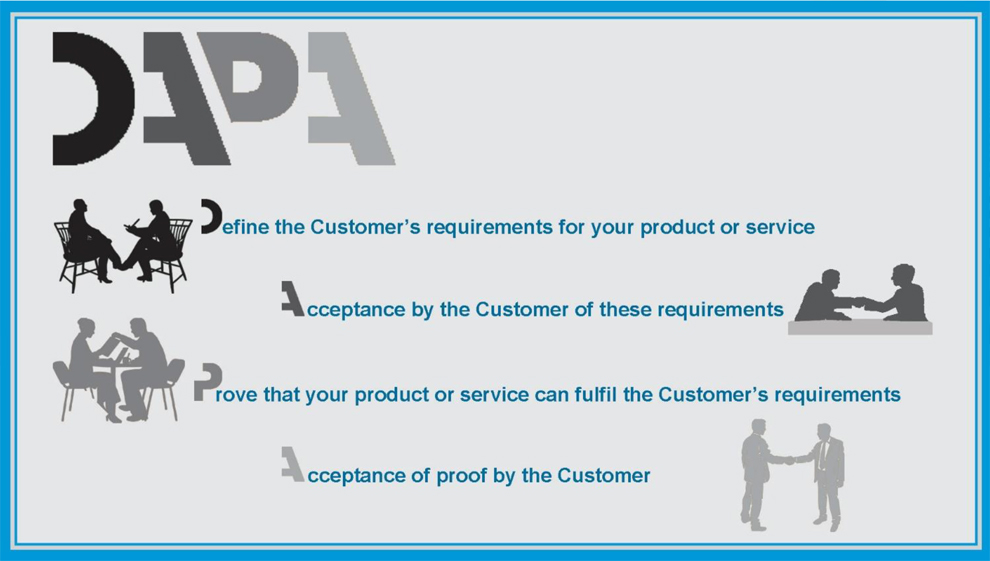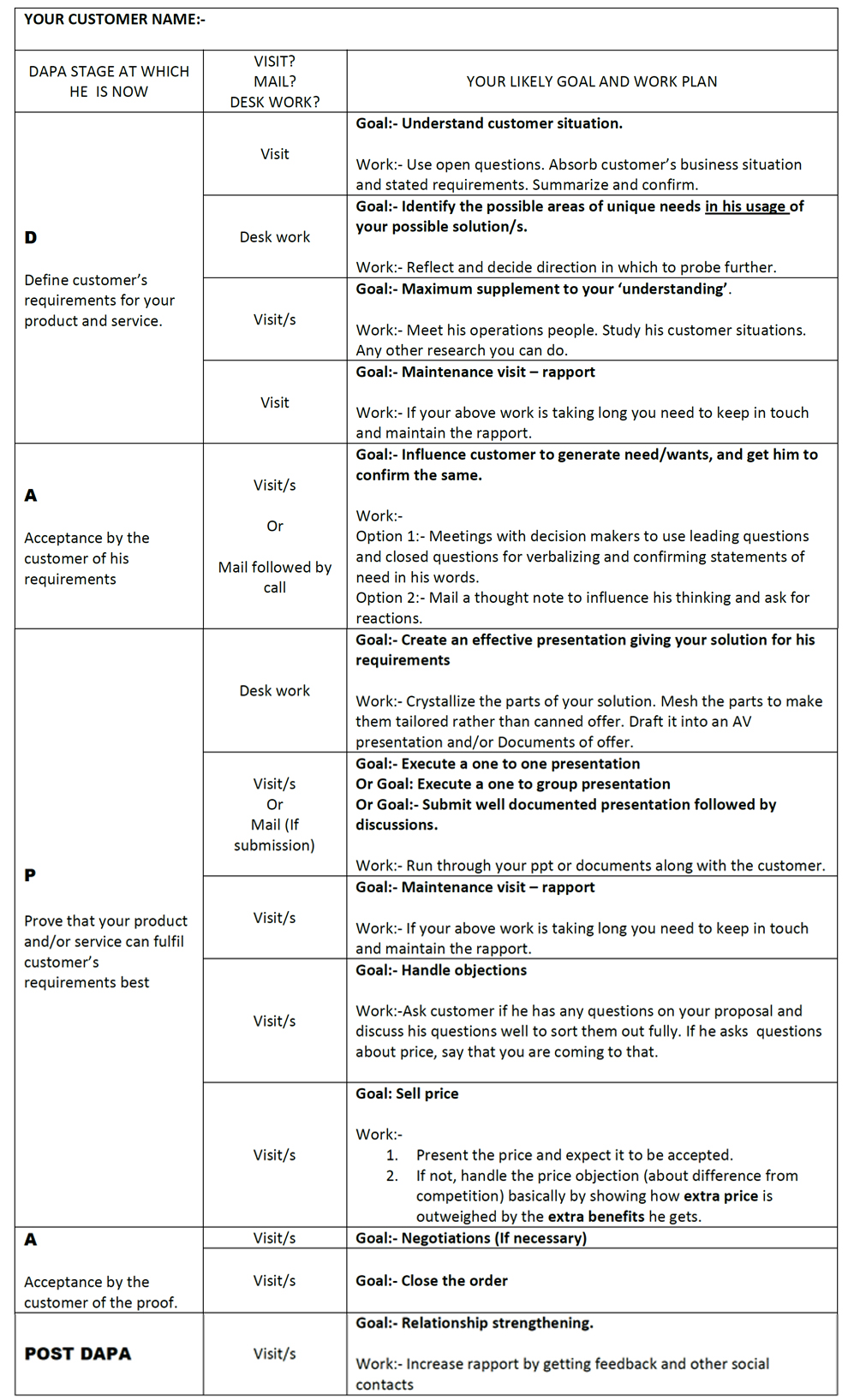.. do salespeople aim to fulfil an assumed need ?

DAPA is a simple yet a powerful method of personal sales process as evolved by Mercuri International. Each alphabet of DAPA© indicates 4 steps in the process of selling as above.
Mercuri splits this total process into two sets:- the DA (first half of first two steps) and the PA.
Which of these 4 steps would most salespeople tend to take as their first step in selling to a Customer?
It is the 3rd step, P of DAPA© that is taken as a first step by many salespeople - telling the Customer what they can offer. Like the salesperson in Case#3. But as a famous saying goes, selling is not telling. Selling is much more than telling. It is to be able to make the Customer talk first, help him to open out and define his situation (DA) and then telling him what you can do for him that will be a real benefit to him.
Mercuri International has a copyright for DAPA method of selling and it is a proprietary method developed solely for the personal use of people trained in it. No commercial use of DAPA is permitted for training by any entity other than Mercuri International units all over the world.
High Pressure selling or Forceful Selling
Those who believe in ‘selling being telling’, tend to do their ‘P’ before ‘DA’. They are indulging in high pressure selling. But number one principle of sales ethics is that a sale which does not really benefit Customer does not benefit the seller.
With DAPA you engage with the Customer in forceful selling. Forceful selling and high pressure selling are not the same. By following DAPA you will make it pleasant for Customer to listen and talk to you about his business and/or situation and his benefits. In today’s world he gets very few salespeople like that and that by itself becomes a big differentiator for you.
You can make it more unique by being different than what your competitor’s salespeople do. Search for new ways of looking at problems and solutions, ways that no one uses now; or rediscover and reactivate old ways that have gone out of use and can be tried again.
Be different! You can, with DAPA!! That is your power in Customer driven goal oriented selling.
Goal setting for sales visits
How can DAPA help you become more goal oriented and ensure goals that are Customer oriented? The table below is a unique guide for you to do that. Adapt it for your selling situations. You could complete all the work in the table below in 10 minutes or spread over 10 visits. It is the principle of goal setting in table below that is the message.
In the Case#2 VP sales told the salespeople that simply by having a goal for each visit you can help customer realize that price is not a weapon and that you are with him to help rather than to fight.
- Imagine that you are visiting your customer for one of the above as your purpose of visit.
- Try to verbalize the goal as above into what you will say to customer why you are there.
- Now compare it with a situation when you reach his office, say hello and wait for him to respond.
In which scenario will he “take out price as his weapon”?


















